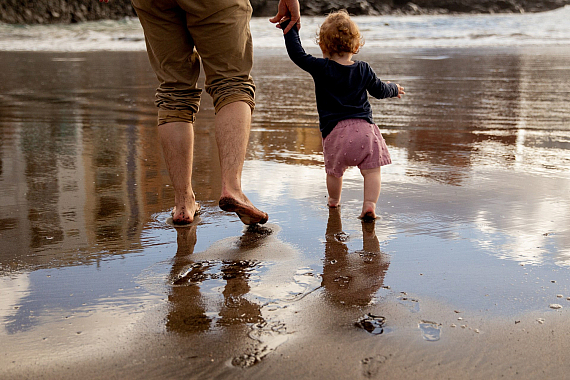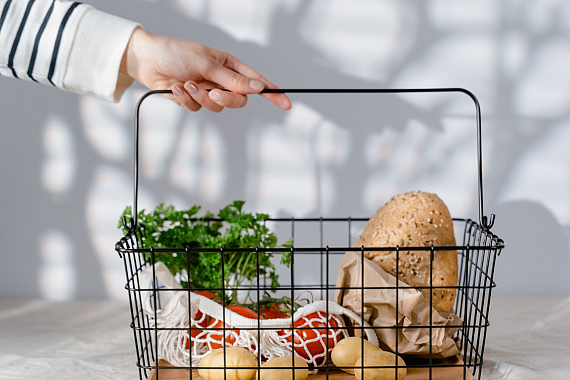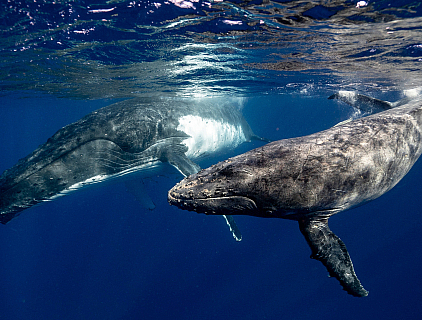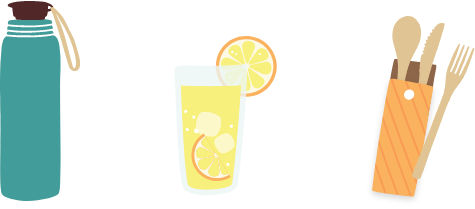Why single-use plastic is an issue and what can we do about it?
The Plastic Free July Team | 10 August 2023
“Just because plastic is disposable doesn’t mean it just goes away. After all, where is away? There is no away.’” Jeb Berrier
This observation made by Jeb Berrier in the 2010 documentary ‘Bag It’ gets to the heart of single-use plastic, with single-use now such a ubiquitous term that in 2018 it was Collins Dictionary’s word of the year. It refers to something used once and then thrown ‘away’ and single-use plastic is its unfortunate poster child – a lightweight but durable product (primarily made from fossil fuels) that we use once, sometimes for just a few minutes, before disposal.
This throwaway mindset hasn’t always come naturally though. We had to be ‘taught’ to embrace the convenience of disposable plastic until it became so common that we stopped really noticing it and forgot the simple alternatives. The extent is hard to visualise. To give you some idea, in just over six decades, the equivalent of 8.3 billion baby humpback whales-worth of plastic, much of it single-use, has been produced. If we stay on this trajectory, plastic generation is expected to double by 2040, tripling plastic leakage into the ocean and quadrupling levels of plastic pollution.
Isn’t single-use plastic recyclable?
Just because something is technically recyclable, doesn’t mean it will be. Many people are surprised to learn the very low plastic recycling rates. As of 2015, around 9 per cent of all plastic ever made has been recycled with less than one percent recycled more than once. So where does the majority of single-use plastic end up? The ‘away’ Jeb Berrier refers to does exist. ‘Away’ is in our landfills and our environment – the rivers, snowfields, nature reserves, beaches, and parks. ‘Away’ is in the bodies of wildlife, and, as research by the Minderoo Foundation is making increasingly clear, ‘away’ is in our bodies too. This is the fundamental issue – the plastic waste that results from the ways as individuals we are using (not reusing) plastic and, significantly, the ways producers and businesses are using it.

What are common single-use plastic items?
Common single-use plastic items are the ones many of us are familiar with; plastic bags, plastic bottles, plastic straws, and plastic cups. These were the four top items that people focused on in the early years of the Plastic Free July challenge. They are still some of the most popular items that people tackle when they start Plastic Free July. For the 2023 Plastic Free July challenge, for example, supporters joined with local MPs, senators, mayors, CEOs and celebrities to take a small step by committing to refuse single-use cups in July (and beyond). Other common single-use plastic items include plastic packaging (just take a quick glance down your local supermarket aisle), plastic cutlery, plastic takeaway containers, cotton buds, balloons, and sanitary items.
So, what are the alternatives to single-use plastic?
This is one of our most frequently asked questions. It can be as simple as remembering your reusable water bottle, buying common pantry items in bulk, or keeping your reusable grocery and fresh produce bags in your car or switching from bottled soap to bar soap. To make things easier, the handy menu of popular alternatives to common single-use plastic items including decorations, sanitary items, bathroom products, straws, bin liners, and many more. The menu suggests popular alternatives to single-use plastic items, and next steps many people take to help reduce plastic waste. We know it can feel overwhelming at first (it felt that way for us too), but simply starting with one change often leads to other changes. Many people tell us their efforts inspire others – new habits can create a ripple effect in your home, school, workplace, and local community.

I care, but isn’t this a problem for governments to solve?
Absolutely, and as citizens we can support this change whilst also taking responsibility for our consumption. Most people (88 percent of people globally) support policies and action to reduce plastic waste. People from all walks of life are choosing to refuse single-use plastic for many reasons including their health, their children’s future, and their environment. Taking action together makes a big difference:
- In 2022, 140 million Plastic Free July participants from around the world took steps to reduce single-use plastic resulting in overall waste reduction of 2.6 billion tonnes.
- In the same year, United Nations Member States endorsed a historic resolution to commence a global treaty to end plastic pollution by the end of 2024.
- A record number of businesses, organisations, NGOs, and governments are taking part in the Plastic Free July challenge.
- Governments around the world are introducing single-use plastic bans.
There was a not-too-distant past when people lived without single-use plastic. The single-use plastic bag, for example, was only invented in the mid-1960s. We can enjoy a future without it too. What that means is different for everyone. For the founder of Plastic Free July, Rebecca Prince-Ruiz it means that one day she’ll be able to walk along the shoreline of her local beach and look down at shells and seaweed without expecting to see plastic. What does a world without single-use plastic look like to you?



